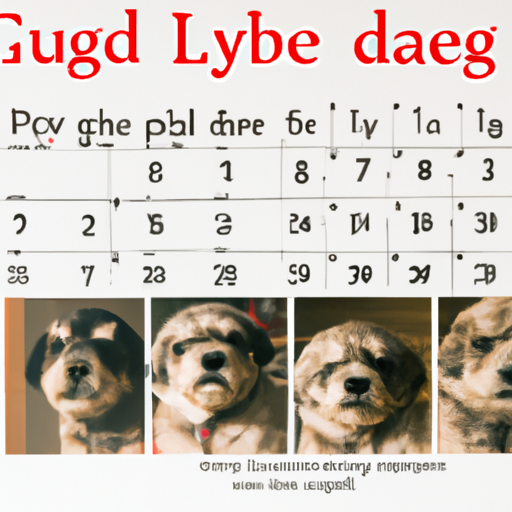As a caregiver, understanding the lifecycle of your canine companion is an essential part of providing the best possible care. In this comprehensive guide, we’ll break down everything you need to know about a dog’s cycle – from puppyhood to golden years.
Understanding a Dog’s Lifecycle
Your journey with your dog begins at birth. Dogs are considered puppies until they reach one year old. This first year is crucial for their development, both physically and behaviorally.
- Newborn (0-2 weeks): Puppies are born deaf, blind, and toothless. They rely heavily on their mother for warmth and nutrition.
- Neonatal Period (2-4 weeks): Puppies begin to open their eyes and ears. Their teeth start to grow in and they begin to crawl.
- Socialization Period (4-12 weeks): This is when puppies start to interact with other dogs, people, and their surroundings. It’s also the ideal time to start basic training.
- Juvenile Period (3-6 months): Puppies are now more independent and their personalities start to emerge. They start teething and may become more destructive.
- Adolescence (6-12 months): Much like human teenagers, adolescent dogs are in a transition period. They may become more independent, and even rebellious.
The next stage is adulthood, which starts at one year and ends around seven years old. This is the prime of their life where they are the most active and healthy.
Their senior years begin at seven years old, though it can vary depending on the breed and size of the dog. Senior dogs are more prone to health issues and require additional care.
The Heat Cycle in Female Dogs
If you’re caring for a female dog, it’s important to understand her heat cycle. This is the period where she becomes receptive to mating. Female dogs typically have their first heat cycle between six and nine months old, but it can start as early as four months or as late as two years.
Here’s a breakdown of the stages in a female dog’s heat cycle:
- Proestrus (4-20 days): The start of the heat cycle. Your dog may be more affectionate and urinate more frequently. Blood spotting may occur.
- Estrus (5-13 days): This is when your dog is most fertile. She will be more receptive to male dogs during this time.
- Diestrus (60-90 days): This is the period after mating. If your dog is pregnant, this stage will last until the puppies are born. If not, it will last about two months.
- Anestrus (2-3 months): This is the resting phase between heat cycles.
| Stage | Duration | Signs |
|---|---|---|
| Proestrus | 4-20 days | Increased affection, frequent urination |
| Estrus | 5-13 days | Receptive to mating |
| Diestrus | 60-90 days | Pregnancy or rest |
| Anestrus | 2-3 months | Resting phase |
Caring for Your Dog Throughout Their Life Cycle
As a caregiver, your role will change throughout your dog’s life. Young dogs need training and socialization, while older dogs require more health monitoring and comfort care.
Here are some tips for each stage:
- Puppies: Focus on training, socialization, and providing a balanced diet.
- Adults: Regular exercise, continued training, yearly vet exams, and a balanced diet.
- Seniors: Regular vet exams, a diet suited for seniors, and accommodating any physical limitations.
The Emotional Cycle of Dogs
Just like humans, dogs have emotional cycles. They can experience a range of emotions, from joy and love to fear and anxiety. As a caregiver, it’s your job to provide a safe and loving environment where your dog can express these emotions in a healthy way.
FAQs
Q: How long is a dog’s heat cycle?
A: A dog’s heat cycle lasts about 2-3 weeks on average, but it can vary.
Q: How often do dogs have a heat cycle?
A: Most dogs have a heat cycle twice a year, but it can vary depending on the breed and individual dog.
Q: How can I tell if my dog is in heat?
A: Signs of a dog in heat include increased affection, frequent urination, and blood spotting.
Q: How can I care for my senior dog?
A: Senior dogs require more frequent vet checks, a special diet, and adjustments to their exercise and living conditions to accommodate any physical limitations.
Q: Can male dogs have a heat cycle?
A: No, only female dogs have a heat cycle. Male dogs are capable of breeding year-round.
Remember, each dog is unique, and this guide is meant to provide general information. Always consult with a vet for questions about your dog’s health or behavior.



